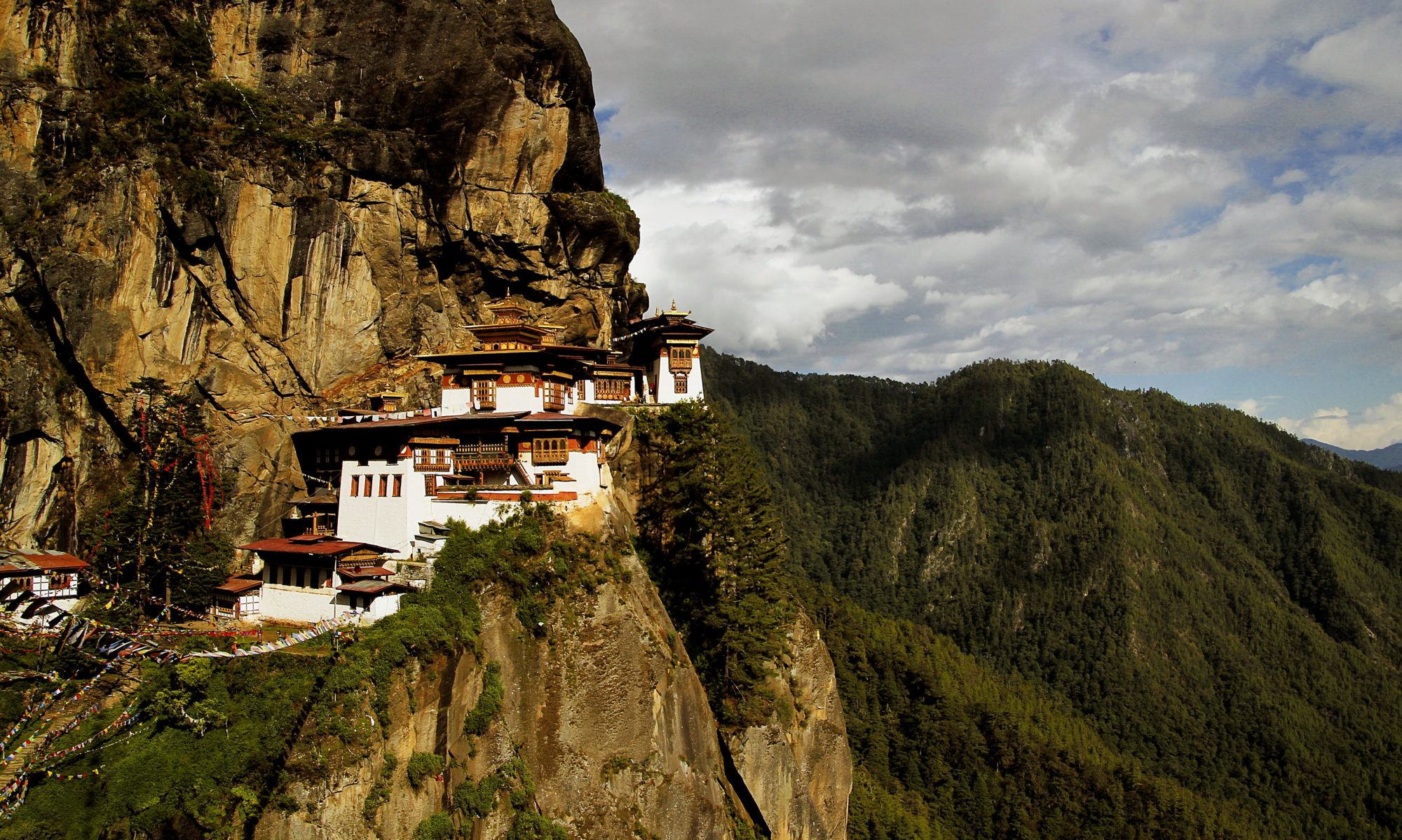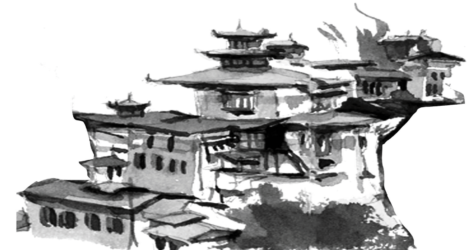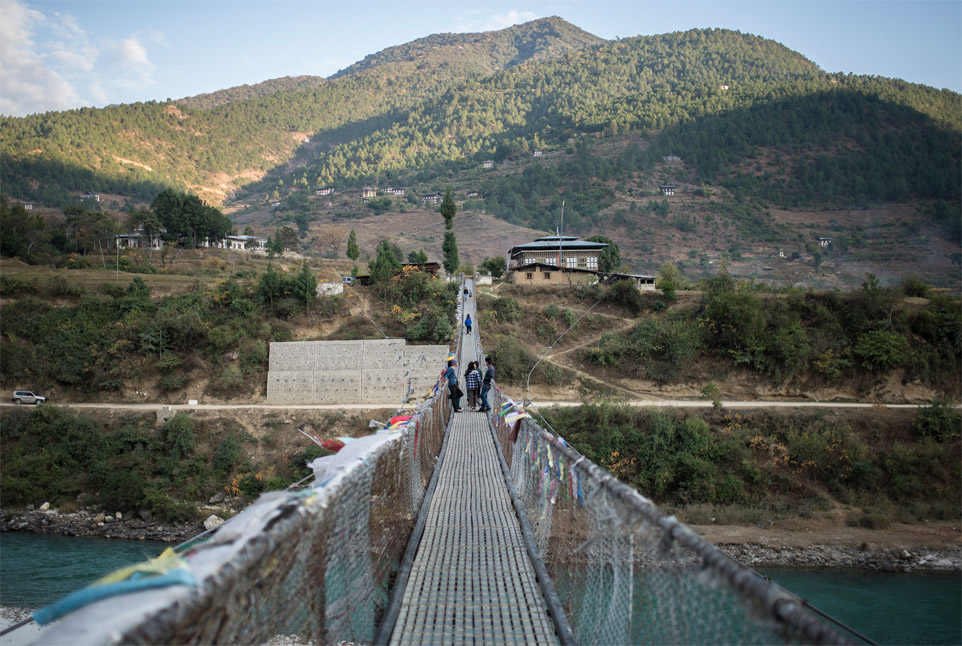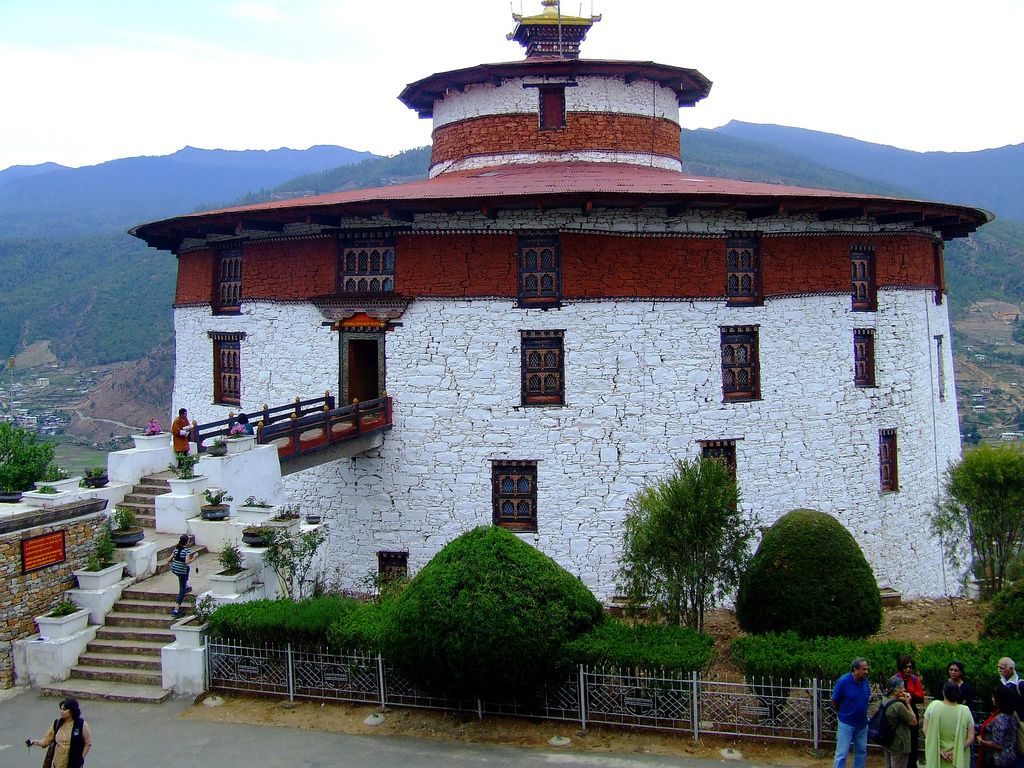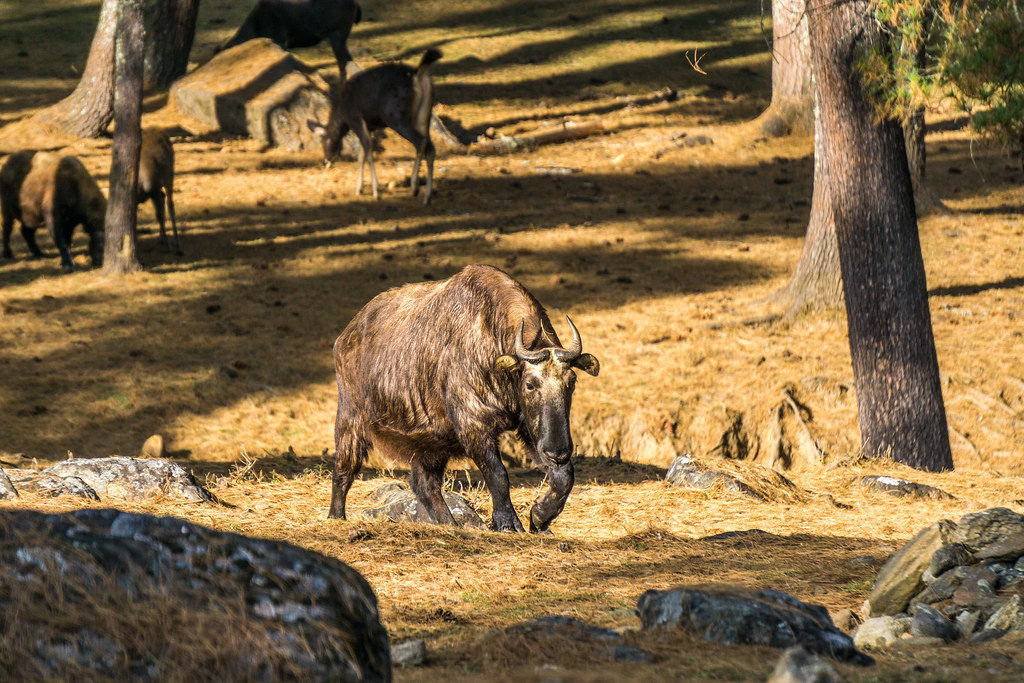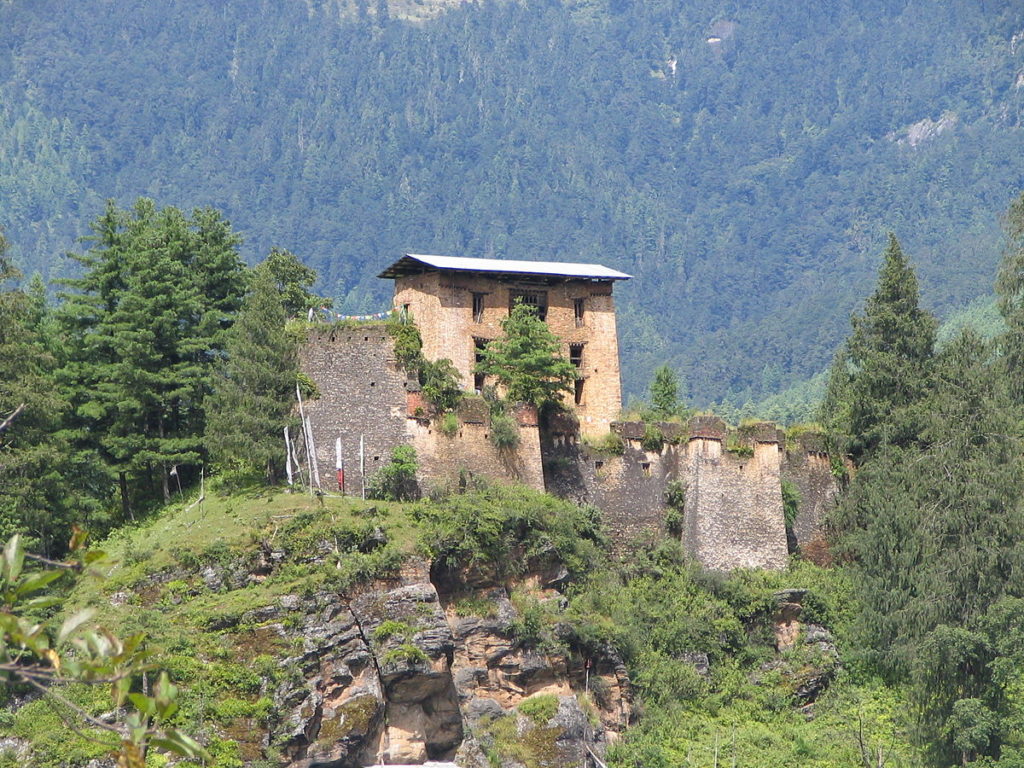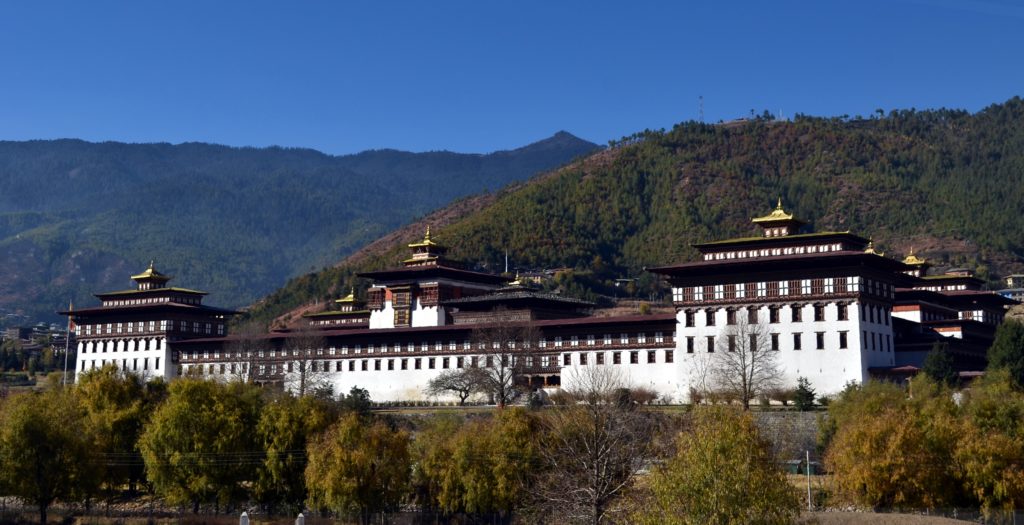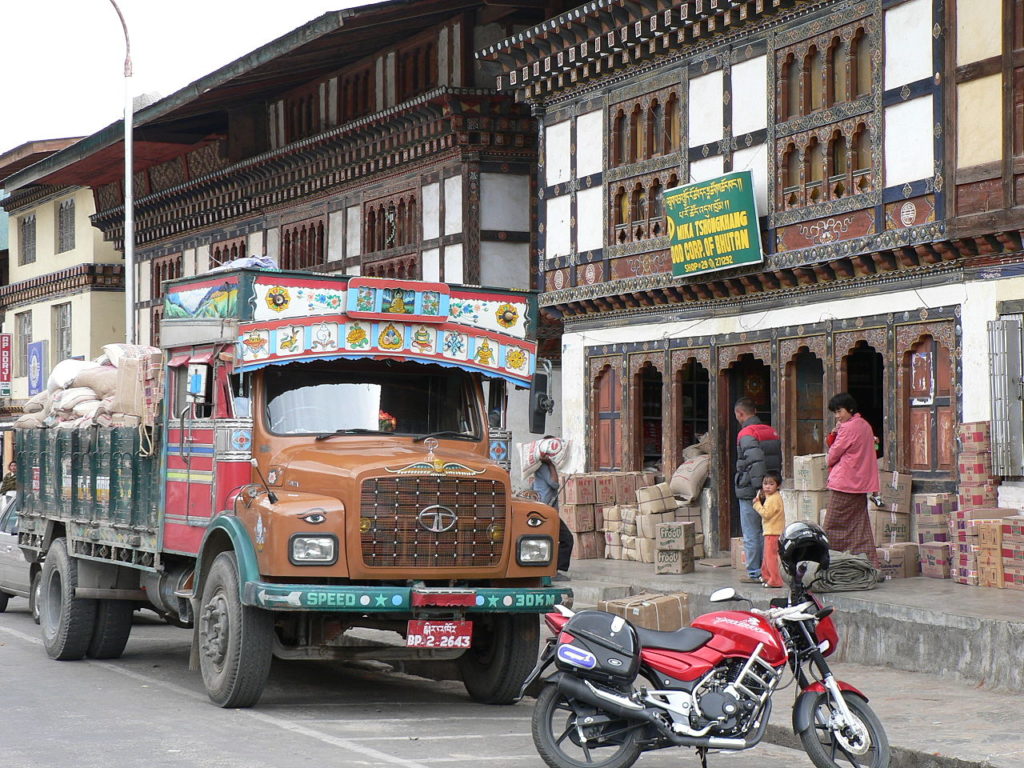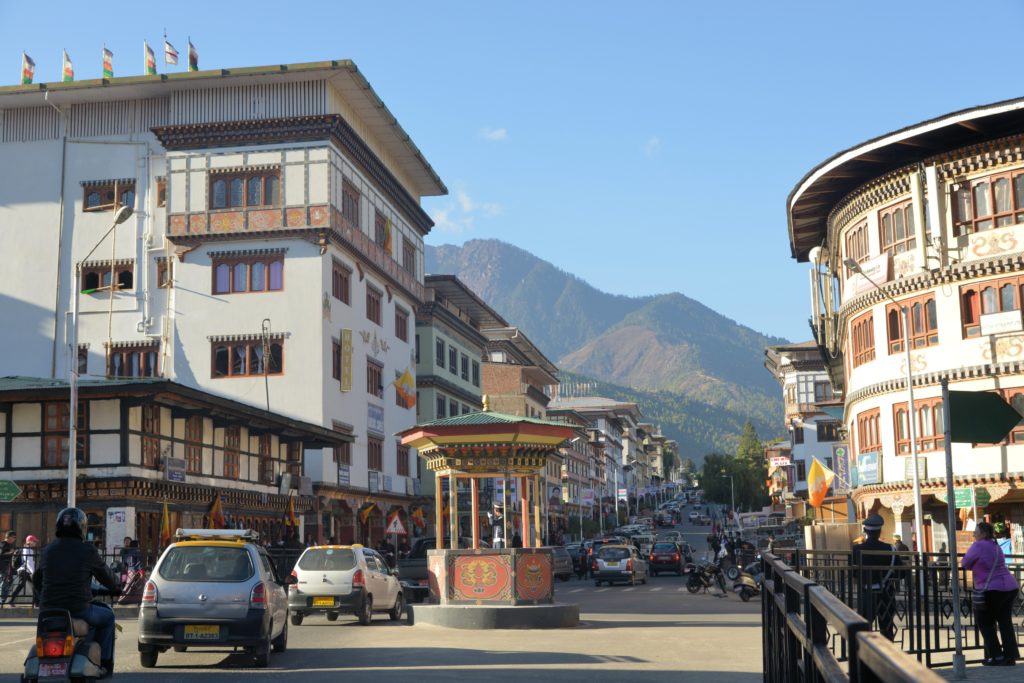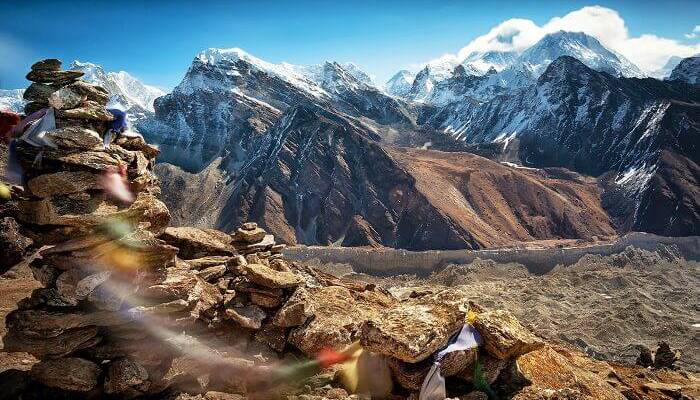
Motor Biking in Bhutan
- Outline Itinerary
- Day 01: Arrive Phuentsholing
- Day 02: Phuentsholing – Paro
- Day 03: Paro.
- Day 04: Paro – Thimphu
- Day 05: Thimphu
- Day 06: Thimphu – Punakha
- Day 07: Punakha – Trongsa
- Day 08: Trongsa – Bumthang
- Day 09: Bumthang
- Day 10: Bumthang – Mongar
- Day 11: Mongar – Trashiyangtse
- Day 12: Trashiyangtse – Trashigang via Ranjung.
- Day 13: Tashigang – Samdrup Jongkhar
- Day 14: Samdrup Jongkhar –Departure
Detailed Itinerary
Day 01: Arrive Phuentsholing
Assistance upon arrival and transfer to your hotel.
Overnight at the hotel.
Day 02: Phuentsholing – Paro (2300m 185 kms)
After breakfast we will depart for Paro.
On the way we will visit the famous Kharbandi Gonpa, from where we will have the scenic view of the plains of India. We will pass numerous small town of Gedu, Chukha and Chunzom, the confluence of Pa Chu and Thin Chu.
Enjoy the rest of the scenic drive along the Pa Chu to reach one of the most beautiful valley in Bhutan, Paro.
Rest of the time at leisure.
Overnight at the hotel.
Day 03: Paro.
After breakfast drive 20 minutes to the end of the valley to Drukgyel Dzong from where one can see the towering peak of Jomolhari (7,316m, 24,003 ft). This mountain, also revered as a powerful goddess, forms the border with Tibet and provides magnificent background to the ruined Drukgyel Dzong and village.
Drive to Rumthangka and stop for the photo stop of the Taktsang Monastery.
Taktsang Monastery, clinging on the steep rock, is one of the holiest temple in Bhutan.
It is believed that Guru Rinpoche flew on the Tigress back and meditated here. The trek to the temple through the pine tree and sweet aroma of the air is indeed a very special and memorable event. The return hike will take about 05-06 hours.
On Our way back, we will visit Kyichu Temple (built by the Tibetan King Songtsen Gompo in the 7th century).
Afternoon visit the National Museum which houses and impressive collection of fine arts, paintings, bronzes, textiles, jewellery and handicrafts sections as well as galleries of stamps for which the Country is very popular.
Also visit the Rinpung Dzong, the Fortress of the Heap of Jewels, built in 1645 by Shabdrung Ngawang Namgyel. It is an imposing square fortress, representative of typical Dzong architecture, with a central tower and courtyards housing the administrative (Dzongkhag) and has a community of about 200 monks.
A hike down the moderate slope to the cantilever bridge, one of the finest specimens in Bhutan with its shingle roof and two guard-houses at each end.
Visit the National Museum which houses and impressive collection of fine arts, paintings, bronzes, textiles, jewellery and handicrafts sections as well as galleries of stamps for which the Country is very popular.
Also visit the Rinpung Dzong, the Fortress of the Heap of Jewels, built in 1645 by Shabdrung Ngawang Namgyel. It is an imposing square fortress, representative of typical Dzong architecture, with a central tower and courtyards housing the administrative (Dzongkhag) and has a community of about 200 monks.
Overnight at the hotel.
Day 04: Paro. Local visits. Drive to Thimphu (2500m 55 kms)
After lunch depart for the Capital of the Country, Thimphu. The scenic drive along the Pa Chu till we reach the confluence at Chunzum is a photographer’s delight. Climb onwards to cross the villages of Khasadrapchu and Simtokha to reach the Capital.
Upon arrival check in at the hotel.
Overnight at the hotel.
Day 05: Thimphu
After breakfast visit Memorial Chorten: This stupa was built in the memory of Bhutan’s third king, His Late Majesty, King Jigme Dorji Wangchuk, who is popularly regarded as Father of modern Bhutan. Folk Heritage Museum: Established in year 2001, it provides deep insight to classical Bhutanese rural lifestyle by displaying original artifacts. National Library: The history of Bhutan lies imprinted in archaic texts, which are preserved at the National Library. Besides thousands of manuscripts and ancient texts, the library also has modern academic books and printing blocks for prayer flags. Arts & Crafts School: This school teaches the techniques of traditional thangkha paintings. On a visit, one can see students at work producing intricate design on cloth. Visit the Takin sanctuary to have a glance at the national animal of Bhutan, Takin.
Overnight at the hotel.
Day 06: Thimphu – Punakha (1400m 70 kms)
After breakfast depart for Punakha drive to Dochu La Pass (3050m). If the weather permits you can see a range of high peaks toward the north east. The recently built 108 chortens gives the ridge a very beautiful and charming presence. On the way is Chhimi Lhakhang, the temple of the Divine Monk, Drukpa Kuenley. The approach to the temple is an easy walk through the village. Continue drive to Punakha and check in at the hotel. Visit Punakha Dzong, the most beautiful Dzong in Bhutan. Punakha Dzong is built in 1637 by Shabdrung, the spiritual and temporal ruler of Bhutan prior to the present dynasty. It is an old capital which still serves as the winter residence of the monk body. The first King, Ugyen Wangchuck, was crowned here in 1907. From the distance this Dzong look like a giant ship on sail.
Overnight at the hotel.
Day 07: Punakha –- Trongsa (2200m 146 kms)
After breakfast depart towards Trongsa. Drive via the Pele La Pass (3300m 10800ft) crosses the Black Mountains, the traditional boundary between west and central Bhutan.) crossing the pretty villages of Rukubji and Chendebji to reach the huge 18th century Chendebji Chorten patterned on Kathmandu’s Swayambhunath Stupa, with eyes panted at four cardinal points. It was built by Lama Shida from Tibet to cover the remains of an evil spirit that was subdued at this spot.
Further drive to Trongsa with the beautiful view of Trongsa Dzong while approaching Trongsa. Upon arrival check in at the hotel.
Overnight at the hotel.
Day 08: Trongsa – Bumthang (3000m 68 kms )
After breakfast visit the Tongsa Dzong located on a spur overlooking the Mangde River. Built in 1648, it was the seat of power over central and eastern Bhutan. Both the first and second King of Bhutan ruled the country from this ancient seat. All five Kings were invested as Trongsa Penlop (‘governer’) prior to ascending the throne. The Dzong is a massive structure with many levels, sloping down the contours of the ridge on which it is built. Also visit the Ta Dzong (watch tower), dedicated to Buddhist epic hero, King Gesar of Ling. Continue drive to Bumthang ascending quickly with an impressive of the Trongsa Dzong, passing the forest of Rhododendrons and old decimated trees. After the Yuto La Pass (3400m 11155ft), the dramatic scenery changes to gentle spruce and fir covered slopes, reminiscent of the Alps.
We will have a brief stop at Zugney to watch the ladies weaving yatras, the speciality of the region. These brightly coloured wool fabrics are displayed outside the houses for sale. Continue the drive over Kiki La (2900m 9515ft), we will have a bird’s eye view of Jakar Dzon and the Bumthang Valley.
Upon arrival check in at the hotel.
Rest of the time at leisure.
Overnight at the hotel.
Day 09: Bumthang
Today after breakfast visit Jampey Lhakhang, Kuje Lhakhang, and Tamsing Monastery. Jampey Lhakhang is one of the oldest monasteries in Bhutan built in 07th century. Kuje Lhakhang is where Guru Rinpoche left the imprint of His body in the cave He was meditating. Tamsing Monastery is the private monastery where we can wash our sins if we carry the coat of nail thrice around the shrines. This coat of nail is made my Pemalingpa Himself.
Also visit the Jakar Dzong, the Fortress of the White Bird, founded in 1549 by the Drukpa Lama Ngagi Wangchuck who saw a white bird landing there when he was looking for a place to build a temple. The headquarters of the Bumthang district is established here but there are no resident monks.
Overnight at the hotel.
Day 10: Bumthang – Mongar (1800m 198 kms)
Early morning start for Mongar crossing over the highest pass in Bhutan, Thrumshingla pass touching 4000Mts. The journey continues eastwards, winding through more rugged terrain. The drive, with spectacular views, will take about seven hours. Pass through Ura village in Bumthang before climbing sharply to the highest motor road pass – 12,465 ft on a bridge over the Kurichu. Climb again through pine forests, maize fields and eastern hamlets to Mongar town. The Mongar Dzong, albeit built not to long age, still maintains the architectural traditions of the old Dzongs.
Upon arrival check in at the hotel. Overnight at the hotel.
Day 11: Mongar – Trashiyangtse (1900m 140 kms )
Morning drive to Trashi Yangtshi, en route visit the historical Gom Kora Chorten, a popular pilgrim site where Guru Rimpoche had meditated and subdued the demon that dwelt in the vicinity. This is also the venue for Gom Kora Festival held in early spring
Drive further till we arrive the quite little village of Trashiyangtse.
Visit the Dzong and Chorten Kora.
Chorten Kora was constructed in 1740 by Lama Ngawang Lodey. They say there are three replicas of the Boudhanath Temple of Nepali n the world, one in Tibet, one in Arunachal Pradesh and the last one in Bhutan which is Chorten Kora.
The village is also famed for the local wood carving and interesting purchase in terms of the wooden products can be made here.
This is another (nearby Bomdilling) area where the Black Necked Crane has made their home when they fly in from Tibet.
Overnight at the guest house/farm house.
Day 12: Trashiyangtse – Trashigang (2100m 55 Kms )
Today we will depart for Trashigang.
Trashigang, the second largest district in Bhutan and the main market place for the Eastern districts including the people from Merak & Sakten who will be seen with their unique little yak hair hats and yak leather coat.
From Trashigang we will take an excursion to the village of Radi and visit the weaving center. You will find that most of the woven fabrics in Bhutan come from this part of Bhutan.
Retrace back to Trashigang and visit the impressive Dzong.
Visit Trashigang Dzong, a 17th century fortress standing at the extreme end of the spur, overhanging the Gamri River.
Overnight at the hotel.
Day 13: Tashigang – Samdrup Jongkhar (180 Kms )
The road from Tashigang to Samdrup Jongkhar was completed in the early 1960s. The road descends with its own abruptly through thick jungle before arriving at Samdrup Jongkhar. Along the way see Sherubste, the first college of the country, the blind school and the weaving center in Khaling and the sleepy town of Wamrong/
Overnight at the Hotel.
Day 14: Samdrup Jongkhar – Onwards Destination.
Early after breakfast transfer to the onward Destination.
Main Points
Starting point is from Phuentsholing
Motor Biking ends in Samdrup jongkhar
Cities covered – Phuentsholing, Thimphu, Paro, Punakha, Wangdue, Gangtey, Trongsa, Bumthang, Mongar, Tashigang and Samdrup Jongkhar
Accompanying family can travel in a SUV along the riders at additional cost
Accommodation with breakfast and dinner included at all places
Inclusions
Accommodation with breakfast included at all places in Bhutan
Breakfast
Permit Fee and Applicable Taxes
Basic First Aid Kit
English Speaking Guide
Royal Enfield specialist mechanic
Exclusions
Lunch and dinner
Any cost incurred to reach Bhutan or after exiting Bhutan
Lunch throughout the journey
Personal Expenses
Any kind of insurance, such as accident, theft, medical, evacuation etc
Petrol Cost and the cost of the Spare parts of the bikes, Entrance fee to the monuments/museum
Expenses incurred due to unforeseen reason like land slides, road blocks, etc
PAYMENT POLICY
30 or more days before departure: 70%
Between 29 to 16 days before departure: 100%
TERMS OF REFERENCE
CANCELLATION POLICY
If you Cancel your Holiday Cancellation charges per person
30 or more days before departure: 30% Between 29 to 20 days
before departure: 50% Between 19 to 15 days before departure: 100%
TERMS & CONDITION
If you Cancel your Holiday You or any member of your party may cancel their travel arrangements at any time. Written notification or an e-mail to that effect from the person who made the booking must be received at our office. The cancellation charges applicable are as per the published cancellation policy below: Cancellation charges per person Minimum deposit amount is non-refundable 365-30 Days Minimum Deposit amount INR 15,000 or 25% whichever is high 30-20 Days – 50% Package Cost 20 – 0 Days – 100% Package Cost If we change or cancel your holiday We do plan the arrangements in advance. It is unlikely that we will have to make any changes to your travel arrangements. Occasionally, we may have to make changes and we reserve the right to do so at any time. If there are any changes, we will advise you of them at the earliest possible date. We also reserve the right under any circumstances to cancel your travel arrangements by assigning reasons to you. If we are unable to provide the booked travel arrangements due to reasons beyond our control (e.g. bad weather):We shall first try to offer alternative dates for the tour if the tour hasn’t already commenced. If the tour has already commenced, then we shall refund the booking price/fee charged to you on a pro-rata basis depending on the portion of the tour utilized by you. In all circumstances, however, our liability shall be limited to refunding to you the price we charged as tour Fees. If you want to change your holiday plan after confirmation of Services, if you wish to change your travel arrangements in any way (e.g. your chosen departure date or accommodation), we will do our outmost to make these changes but it may not always be possible. Any request for changes must be in writing from the person who made the booking. All cost incurred due to amendment will be borne by you. If you have a complaint If you face any problem during your holiday, please inform the relevant supplier (e.g. your hotelier, transporter etc.) and/or our representative immediately who will endeavour to set things right. If your complaint is not resolved locally, please follow this up within 28 days of your return home by writing to us, with your booking reference and all other relevant information. However, please be advised that while we are happy to assist you in the redressal of your complaint, if any, we will be able to extend only our best efforts in managing/coordinating your complaint with the respective service provider. All third party service providers are independent contractors who are at no time under our control or supervision. All booking vouchers and tickets will be provided 3 days before departure. The entry permit office remains closed on Saturdays and Sundays.
